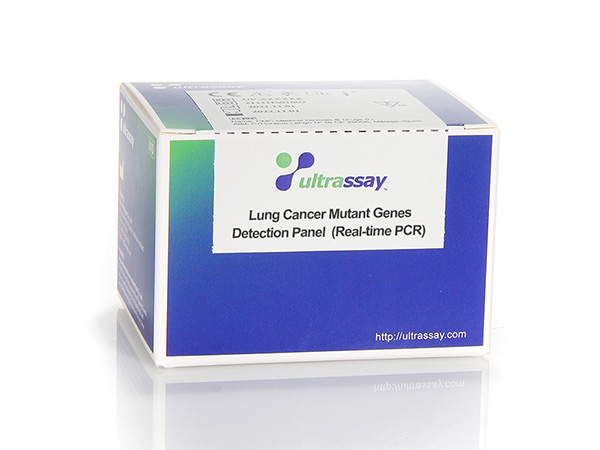Lung cancer is a common malignant tumor, which seriously endangers the health of modern people.Lung cancer can be divided into two main categories: non-small cell lung cancer (NSCLC) and small cell lung cancer (SCLC), among which, non-small cell lung cancer is the most common type of lung cancer, accounting for about 85% [1] of lung cancer. Mutations of multiple genes exist in NSCLC, with common mutated gene being EGFR, HER2, KRAS and BRAF at 47% , 1–4% , 1–16% and 1–2% , respectively, and fusion genes with ALK, ROS1, RET, MET, NTRK1/2/3 and FGFR1/2/3 at 4-7%,1-2%,1-2%,1-5%,0.1-3%and 1.3%, respectively. The mutation status of these driver genes is an important predictor of efficacy in targeted drug therapy. The NCCN Guidelines clearly state that the mutated gene status of patients is tested before targeted therapy, and extensive testing of multiple gene states is strongly recommended for more precise targeted therapy.
The test results of this kit are only for clinical reference and cannot be used as the only individualized treatment basis. Clinicians also need to make a comprehensive judgment on the test results based on the patient’s condition, drug indications, previous treatment conditions and other laboratory test results.
UltraDx Lung Cancer Mutant Genes Detection Panel contains RNA gene fusion detection system and DNA gene mutation detection system. The RNA gene fusion detection includes two processes: 1) Reverse Transcription: extracted RNA from tumor tissue is employed in this step, reverse transcription of target RNA enables complementary DNA (c DNA) synthesis with the action of reverse transcriptase and specific primers. 2) PCR Amplification: the specific primers are designed for amplification of cDNA, and ALK, ROS1, RET, MET, NTRK1, NTRK2, NTRK3, FGFR1, FGFR2 and FGFR3 variant amplification is detected by fluorescent probes.
The DNA gene mutation detection system adopts ARMS technology, which comprises specific primers and fluorescent probes to detect gene mutations. During the amplification, the target mutant DNA is matched with the bases at 3’ end of the primer, and amplified efficiently, then the mutant amplification is detected by fluorescent-labeled probes. While the wild-type DNA cannot be matched with specific primers, there is no amplification occurs.
Applicable sample type: FFPE tumor tissue
.
Applied Biosystems™ Real time PCR system 7500, ABI QuantStudio™5 Real-time PCR system, LightCycler® 480 PCR system, Bio-Rad CFX96 real-time PCR instrument. Ultrassay eQ9600 Real Time qPCR System etc.



